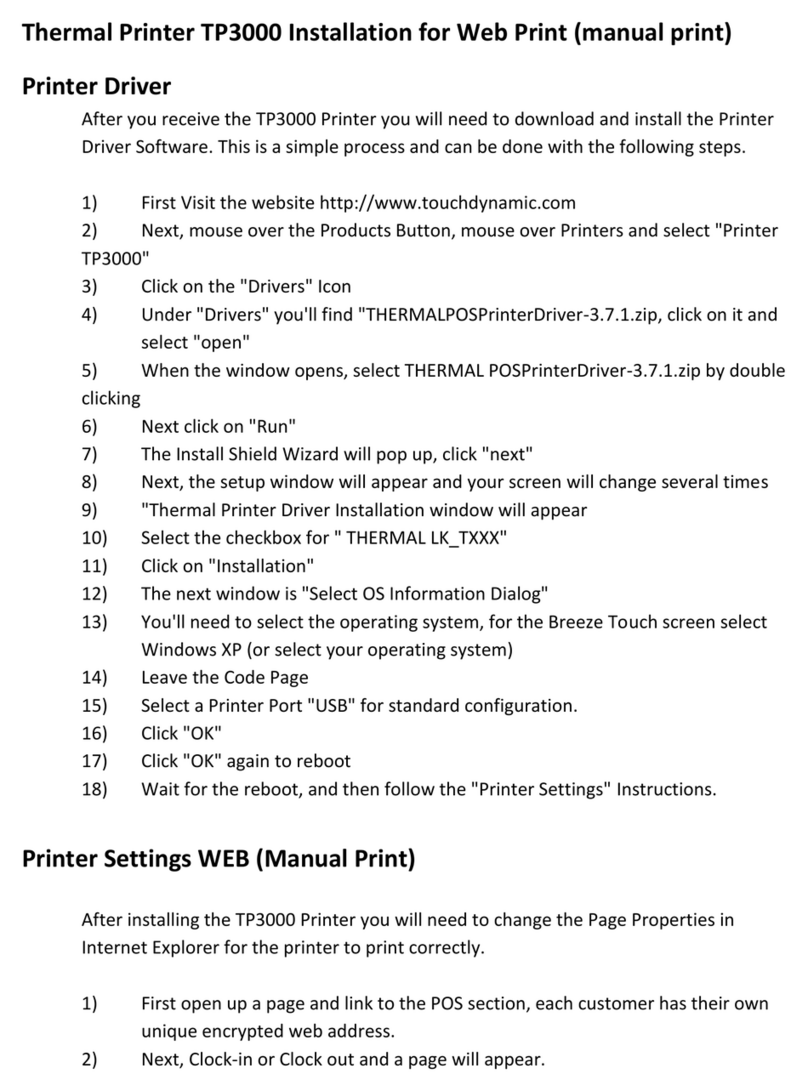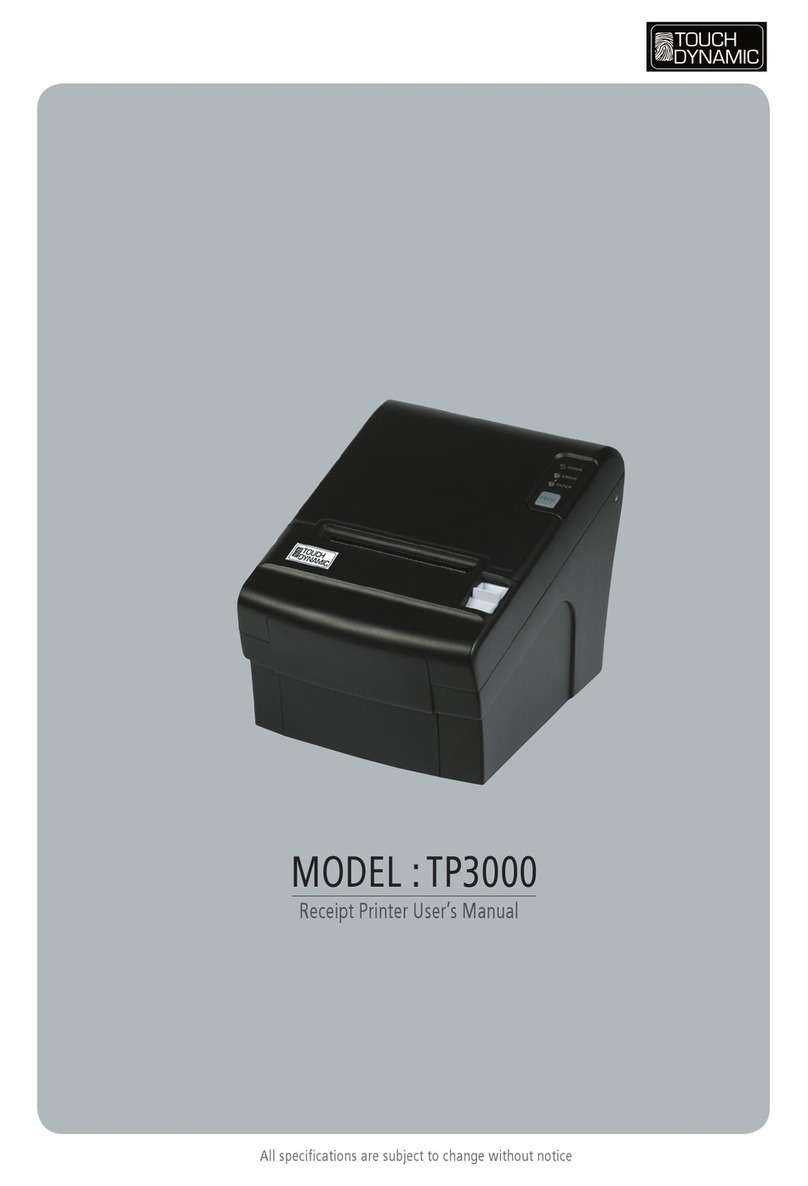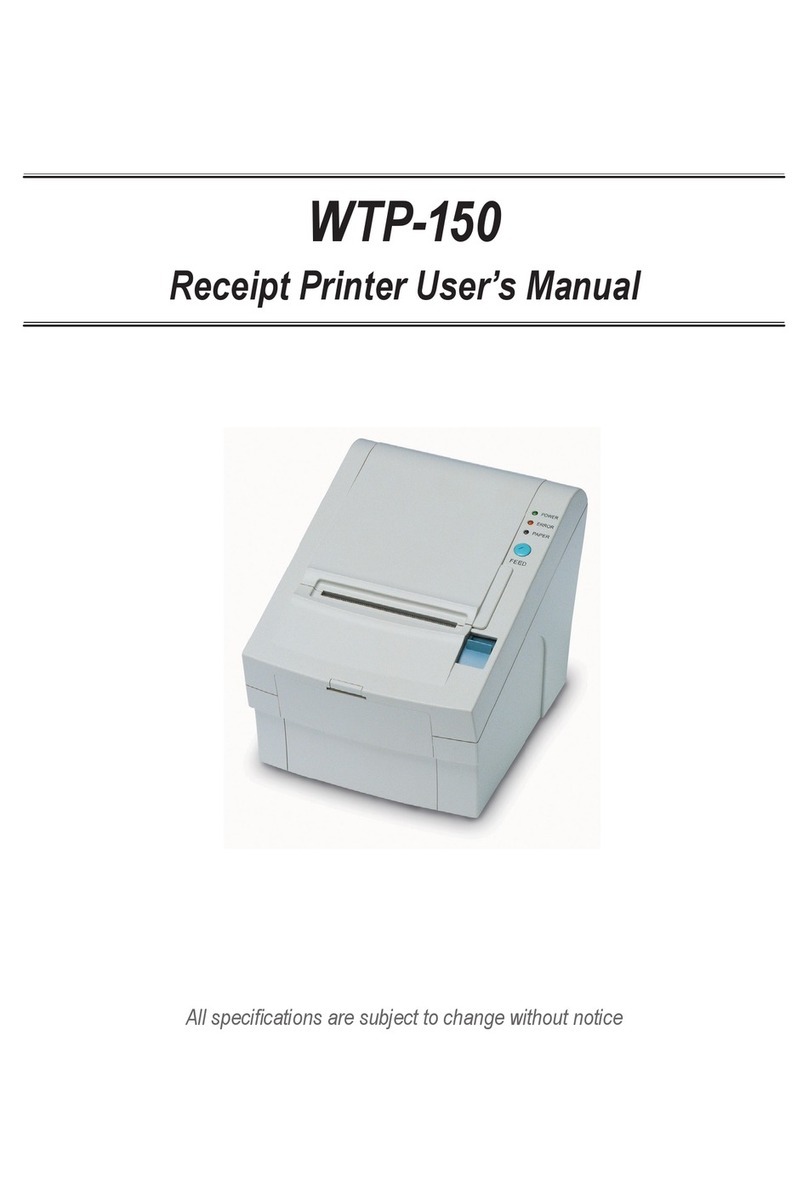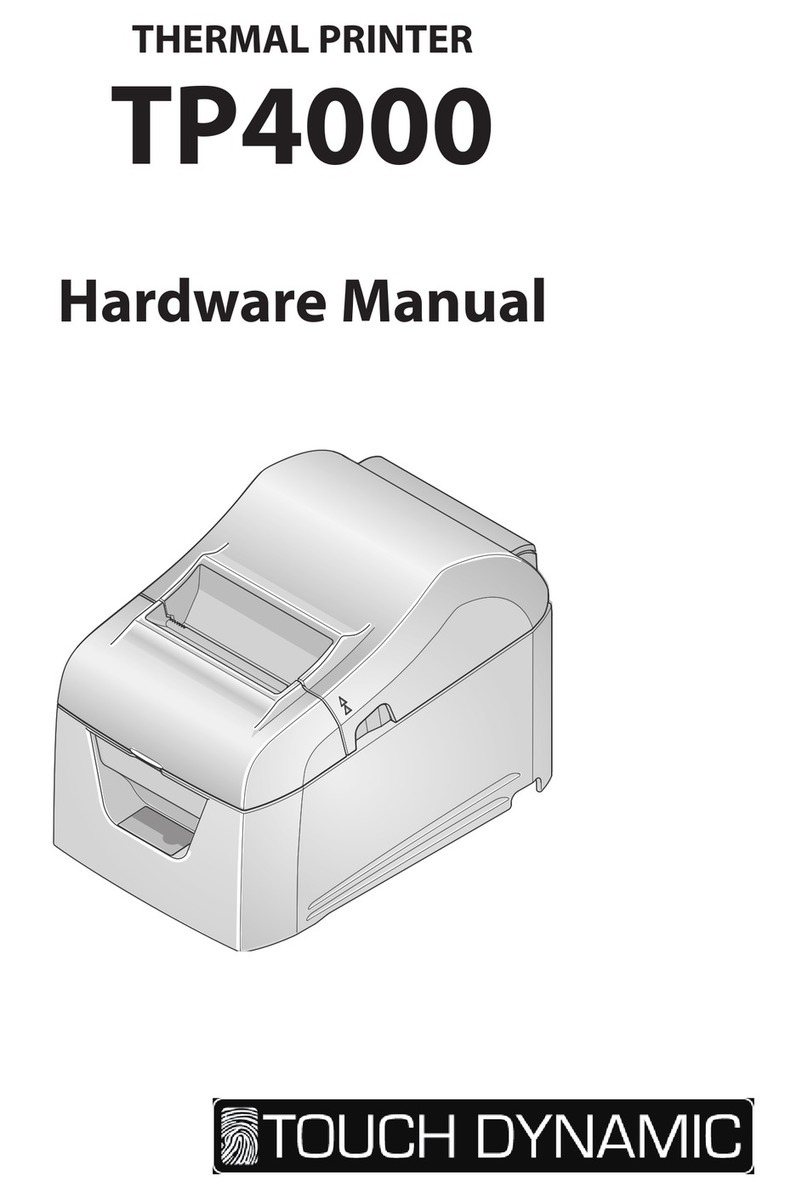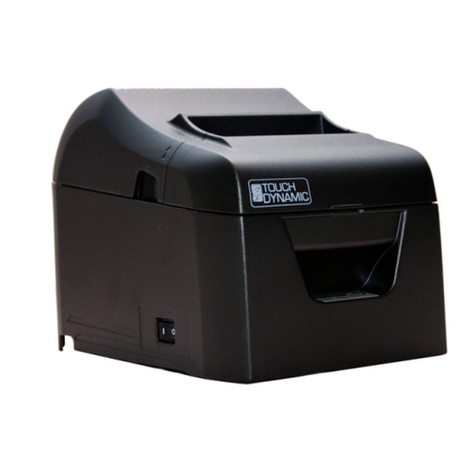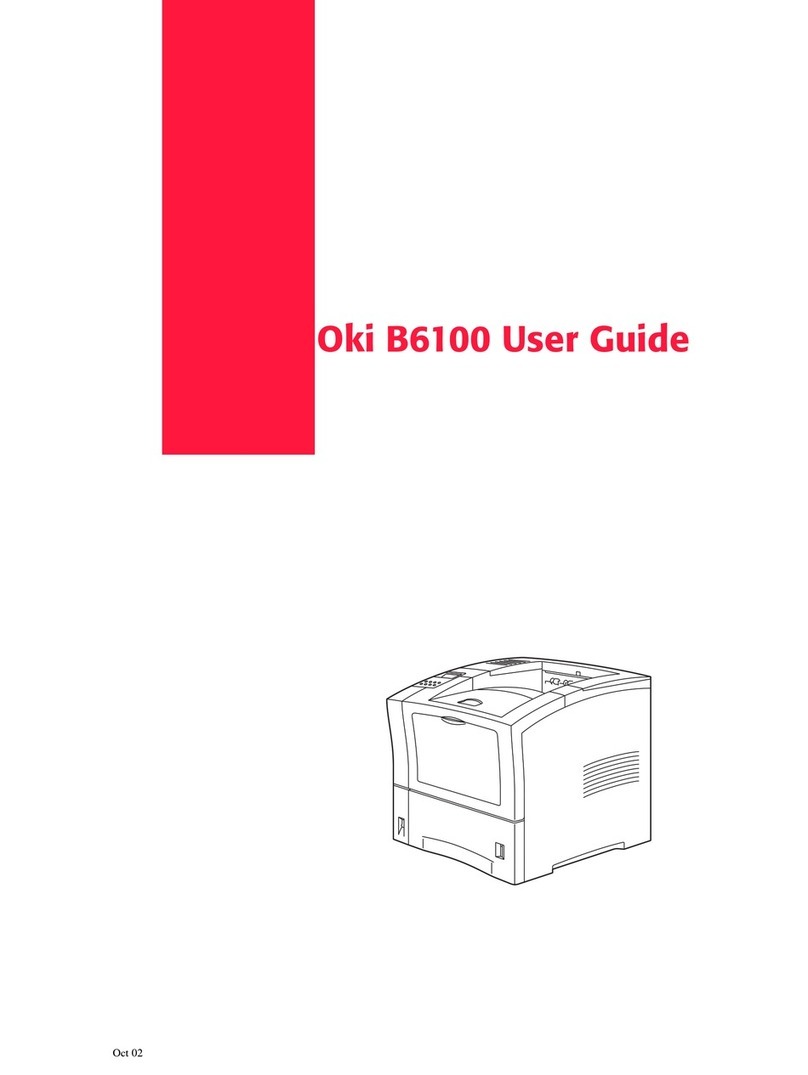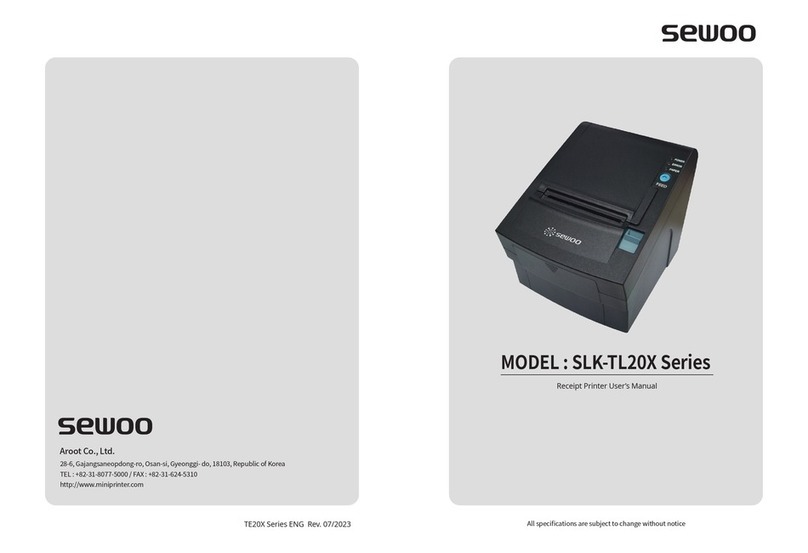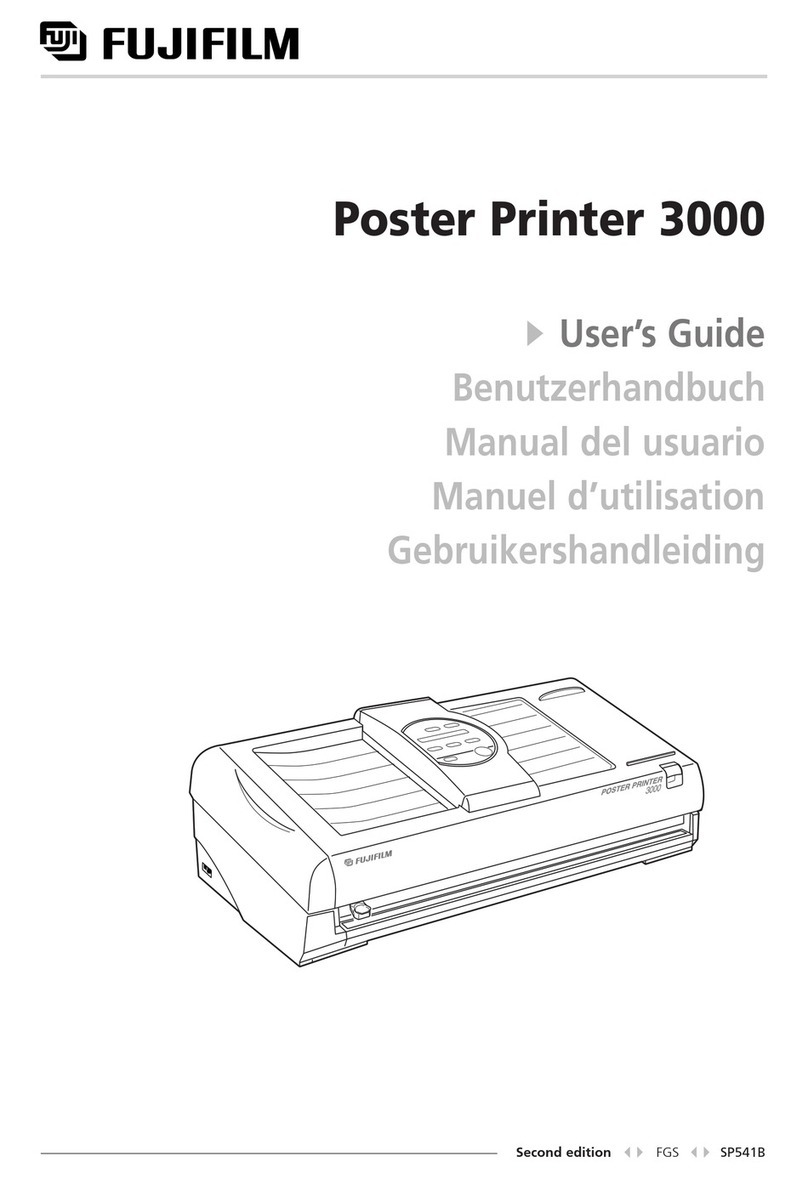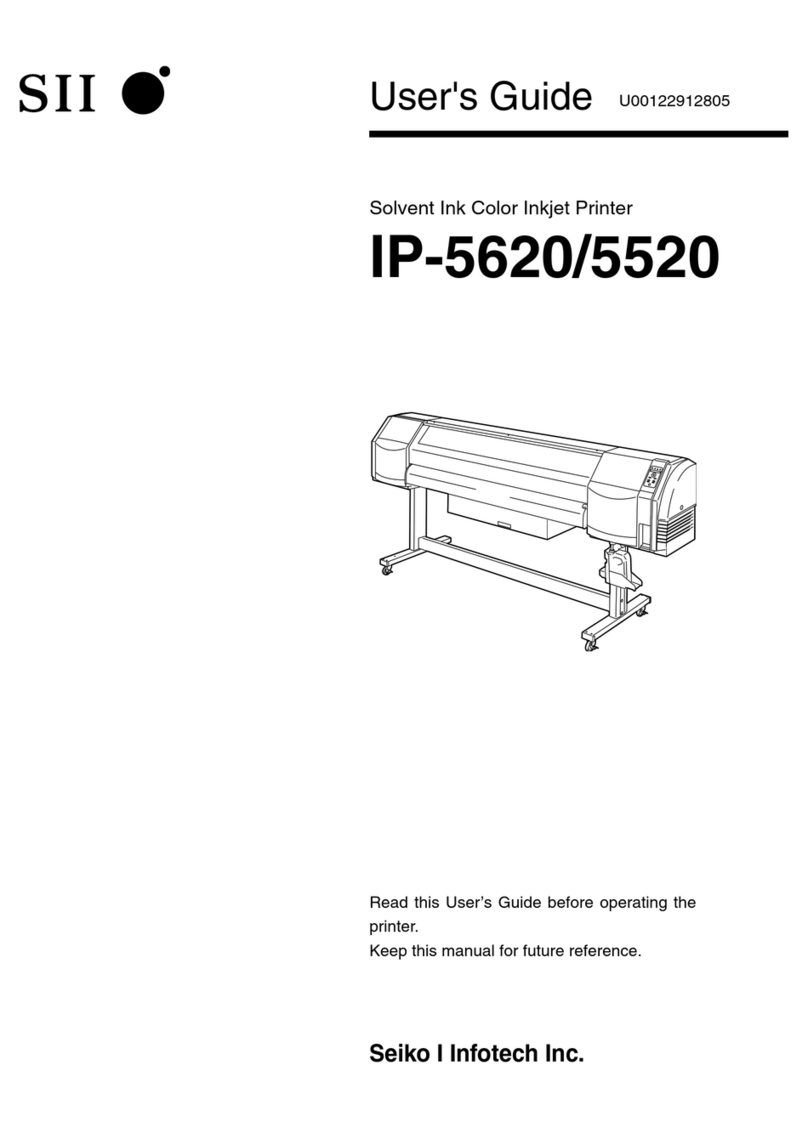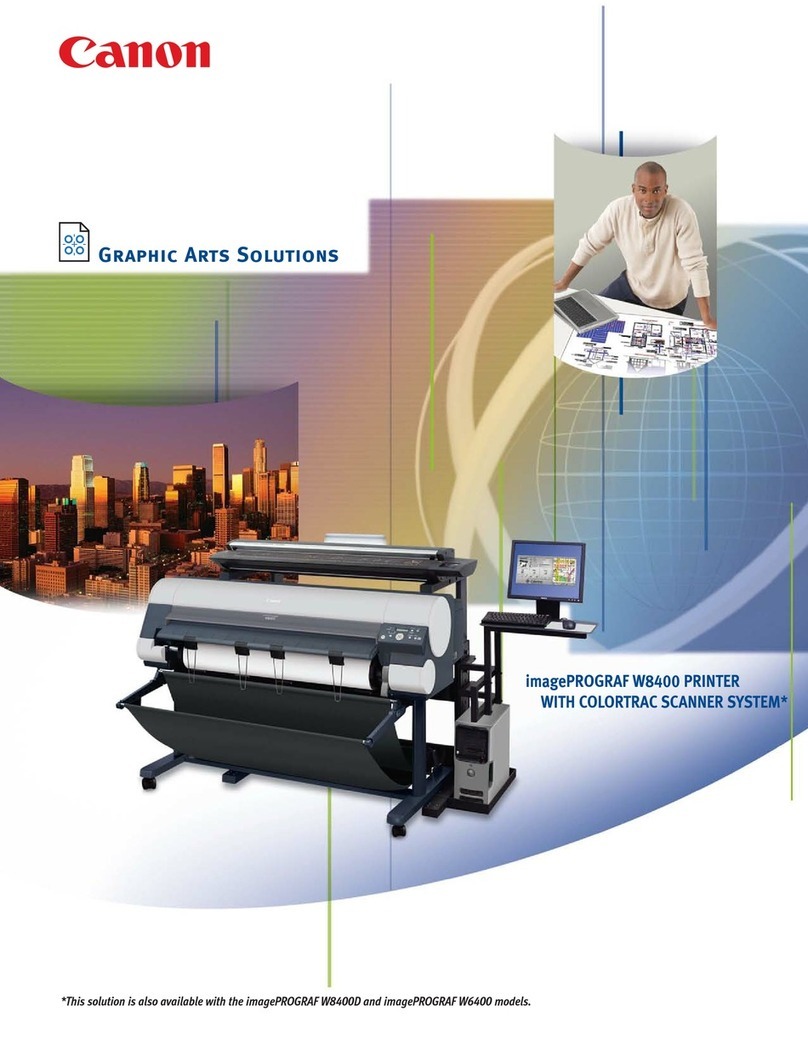Touch Dynamic PR-TB-650-N User manual

THERMAL PRINTER
PR-TB-650-N
Hardware Manual

Federal Communications Commission
Radio Frequency Interference
Statement
This device complies with Part 15 of the FCC Rules. Operation is subject to the following two conditions: (1)
This device may not cause harmful interference, and (2) this device must accept any interference received,
including interference that may cause undesired operation.
NOTE: This equipment has been tested and found to comply with the limits for a Class A digital device,
pursuant to Part 15 of the FCC Rules. These limits are designed to provide reasonable protection against harmful
interference when the equipment is operated in a commercial environment. This equipment generates, uses and
can radiate radio frequency energy and, if not installed and used in accordance with the instruction manual, may
cause harmful interference to radio communications. Operation of this equipment in a residential area is likely to
cause harmful interference in which case the user will be required to correct the interference at his own expense.
For compliance with the Federal Noise Interference Standard, this equipment requires a shielded cable.
This statement will be applied only for the printers marketed in U.S.A.
Statement of
The Canadian Department of Communications
Radio Interference Regulationst
This Class A digital apparatus complies with Canadian ICES-003.
Cet appareil numérique de la classe A est conforme à la norme NMB-003 du Canada.
The above statement applies only to printers marketed in Canada.

TABLE OF CONTENTS
1. Unpacking and Installation.....................................................................................................................1
1-1. Unpacking ....................................................................................................................................1
1-2. Choosing a place for the printer...................................................................................................2
2. Parts Identification and Nomenclature ..................................................................................................3
2-1. Cutter Model ................................................................................................................................3
2-2. Tear Bar Model ............................................................................................................................3
3. Setup..........................................................................................................................................................4
3-1. Connecting the Cable to the PC ...................................................................................................4
3-2. Connecting the Cable to the Printer .............................................................................................4
3-3. Installing the Printer Software .....................................................................................................6
3-4. Connecting the Optional AC Adapter ..........................................................................................7
3-5. Turning Power On........................................................................................................................8
3-6. Connecting to a Peripheral Unit...................................................................................................9
3-7. Loading the Paper Roll ..............................................................................................................10
4. Attaching the Accessories ......................................................................................................................14
4-1. Attaching the Holder Plate.........................................................................................................14
4-2. Attaching the Rubber Feet .........................................................................................................15
4-3. Switch Cover Installation...........................................................................................................16
5. Consumable Parts and AC Adapter .....................................................................................................17
5-1. Thermal Paper Roll ....................................................................................................................17
5-2. AC adapter (option)....................................................................................................................18
6. Control Panel and Other Functions .....................................................................................................19
6-1. Control Panel..............................................................................................................................19
6-2. Errors..........................................................................................................................................19
6-3. Self-Printing...............................................................................................................................21
7. Adjusting the Near-end Sensor .............................................................................................................22
8. Preventing and Clearing Paper Jams...................................................................................................24
8-1. Preventing Paper Jams ...............................................................................................................24
8-2. Removing Paper Jam .................................................................................................................24
8-3. Releasing a Locked Cutter (Auto Cutter Mode only)................................................................25
9. Periodical Cleaning................................................................................................................................26
9-1. Cleaning the Thermal Head .......................................................................................................26
9-2. Cleaning the Rubber Roller .......................................................................................................26
9-3. Cleaning the Paper Holder and the Surrounding Area...............................................................26
10. Specifications ........................................................................................................................................27
10-1. General Specifications................................................................................................................27
10-2. Auto Cutter Specifications .........................................................................................................28
10-3. Interface .....................................................................................................................................28
10-4. Electrical Characteristics (AC adapter)......................................................................................28
10-5. Environmental Requirements.....................................................................................................29
10-6. Reliability Specifications ...........................................................................................................30
11. Dip Switch Setting................................................................................................................................31
11-1. Parallel Interface Model.............................................................................................................32
11-2. RS-232C Interface Model ..........................................................................................................34
12. Parallel Interface..................................................................................................................................37

13. RS-232C Serial Interface.....................................................................................................................38
13-1. Interface Specifications ..............................................................................................................38
13-2. RS-232C Connector ...................................................................................................................39
13-3. Cable Connections .....................................................................................................................41
14. Peripheral Unit Drive Circuit .............................................................................................................42
15. Memory Switch Settings

– 1 –
Note
Printer
Holding plate
Screws
Paper roll
Switch blind
Setup sheets
CD-ROM
Paper roll holder
Rubber feet
1. Unpacking and Installation
1-1. Unpacking
After unpacking the unit, check that all the necessary accessories are included in the package.
Note:The ferrite core and fastener provided with your
printer depend on your printer configuration.
Fig. 1-1 Unpacking
If anything is missing, contact the dealer where you bought the printer and ask them to supply
the missing part. Note that it is a good idea to keep the original box and all the packing materials
just in case you need to pack the printer up again and send it somewhere at a later date.

– 2 –
1-2. Choosing a place for the printer
Before actually unpacking the printer, you should take a few minutes to think about where
you plan to use it. Remember the following points when doing this.
PChoose a firm, level surface where the printer will not be exposed to vibration.
PThe power outlet you plan to connect to for power should be nearby and unobstructed.
PMake sure that the printer is close enough to your host computer for you to connect
the two.
PMake sure that the printer is not exposed to direct sunlight.
PMake sure that the printer is well away from heaters and other sources of extreme
heat.
PMake sure that the surrounding area is clean, dry, and free of dust.
PMake sure that the printer is connected to a reliable power outlet. It should not be on
the same electric circuit as copiers, refrigerators, or other appliances that cause power
spikes.
PMake sure that the room where you are using the printer is not too humid.
WARNING
PShut down your equipment immediately if it produces smoke, a strange odor, or unu-
sual noise. Immediately unplug the equipment and contact your dealer for advice.
PNever attempt to repair this product yourself. Improper repair work can be dangerous.
PNever disassemble or modify this product. Tampering with this product may result in
injury, fire, or electric shock.

– 3 –
Interface connector
For connection to a
host computer.
Peripheral drive connector
Connects to peripheral units such
as cash drawers, etc.
Do not connect this to a telephone.
Power connector
For connection of the AC adapter.
Never unplug the AC adapter while
the printer is on.
Printer cover
Open this cover to
load or replace paper.
Cover open lever
Push this lever in the direction of the
arrow to open the printer cover.
Power switch
Used to turn on/off
power to the printer.
Control panel
Features LED indicators to
indicate printer status and
switches to operate the printer.
Interface connector
For connection to a
host computer.
Peripheral drive connector
Connects to peripheral units such
as cash drawers, etc.
Do not connect this to a telephone.
Power connector
For connection of the AC adapter.
Never unplug the AC adapter while
the printer is on.
Printer cover
Open this cover to
load or replace paper.
Cover open lever
Push this lever in the direction of the
arrow to open the printer cover.
Power switch
Used to turn on/off
power to the printer.
Control panel
Features LED indicators to
indicate printer status and
switches to operate the printer.
2. Parts Identication and Nomenclature
2-1. Cutter Model
2-2. Tear Bar Model

– 4 –
3. Setup
3-1. Connecting the Cable to the PC
3-1-1. Parallel Interface Cable
Connect the parallel interface cable to a parallel port
of your PC.
3-1-2. RS-232C Interface Cable
Connect the RS-232C interface cable to a RS-232C
port of your PC.
3-2. Connecting the Cable to the Printer
Note that the interface cable is not provided. Please use a cable that meets specifications.
CAUTION
Before connecting/disconnecting the interface cable, make sure that power to the printer and
all the devices connected to the printer is turned off. Also make sure the power cable plug is
disconnected from the AC outlet.

– 5 –
Ferrite core
Interface cable
5 cm
(maximum)
Fastener
Parallel interface
cable
RS-232C
interface
cable
3-2-1. Parallel Interface Cable
(1) Make sure the printer is turn off.
(2) Affix the ferrite core onto the cable as shown in
the illustration.
(3) Pass the fastener through the ferrite core.
(4) Loop the fastener around the cable and lock it.
Use scissors to cut off any excess.
(5) Connect the interface cable to the connector on
the rear panel of the printer.
(6) Fasten the connector clasps.
3-2-2. RS-232C Interface Cable
(1) Make sure the printer is turn off.
CAUTION
Before connecting/disconnecting the interface ca-
ble, make sure that power to the printer and all the
devices connected to the printer is turned off. Also
make sure the power cable plug is disconnected
from the AC outlet.
(2) Connect the interface cable to the connector on
the rear panel of the printer.
(3) Tighten the connector screws.

– 6 –
3-3. This Page Left Intentionally Blank

– 7 –
3-4. Connecting the Optional AC Adapter
Note:Before connecting/disconnecting the AC adapter, make sure that power to the printer
and all the devices connected to the printer is turned off. Also make sure the power
cable plug is disconnected from the AC outlet.
(1) Connect the AC adapter to the power cable.
Note:Use only the standard AC adapter and power cable.
(2) Connect AC adapter to the connector on the printer.
(3) Insert the power cable plug into an AC outlet.
CAUTION
When disconnecting the cable, take hold of the cable
connector to pull it out. Releasing the lock makes it easy
to disconnect the connector.
Pulling the cable excessively could cause damage to the
connector.

– 8 –
Power switch
3-5. Turning Power On
Make sure that the Power cord has been connected as described in 3-4.
Turn ON the power switch located on the front of the printer.
The POWER lamp on the control panel will light up.
CAUTION
We recommend that you unplug the printer from the power outlet whenever you do not plan to
use it for long periods. Because of this, you should locate the printer so that the power outlet it
is plugged into is nearby and easy to access.
When an Switch blind is affixed to the printer above the power switch, the ON/OFF marks of
the power switch may be hidden. If this occurs, remove the power cord from the outlet to turn
the printer OFF.

– 9 –
3-6. Connecting to a Peripheral Unit
You can connect a peripheral unit to the printer using a modular plug. See “Modular plug” on
page 42 for details about the type of modular plug that is required. Note that this printer does
not come with a modular plug or wire, so it is up to you to obtain one that suits your needs.
CAUTION
Make sure that the printer is turned off and unplugged from the AC outlet and that the computer
is turned off before making connections.
Connect the peripheral drive cable to the connector on the rear panel of the printer.
CAUTION
Do not connect a telephone line into the peripheral drive connector. Failure to observe this may
result in damage to the printer.
Also, for safety purposes, do not connect wiring to the external drive connector if there is a
chance it may carry peripheral voltage.

– 10 –
Cover open lever
Paper roll
Tear Bar Model
1) Push the cover open lever, and open the printer
cover.
2) While observing the direction of the roll, set the
paper roll into the hollow, and pull on the leading
edge of the paper toward you.
CAUTION
Do not pull out the end of the paper diagonally,
as it will cause the paper to become jammed or
skewed.
3) Push down both sides of the printer cover to
close.
Note:Make sure that the printer cover is securely
closed.
4) Tear Bar Model:
Tear off the paper as shown.
Auto Cutter Model:
If the printer cover is closed after turning on the
power, the cutter operates automatically and the
front end of the paper is cut.
3-7. Loading the Paper Roll
3-7-1. Using 79.5 mm Width Paper Roll
Be sure to use roll paper that matches the printer’s specification.
When using a paper roll with an 57.5 mm width, install the paper roll holder as described on
the following page.

– 11 –
A
Paper Guide
3-7-2. Using 57.5 mm Width Paper Roll
When using a paper roll with 57.5 mm width, install the supplied paper guide on the printer.
To change the effective print width (roll paper width), change the setting at memory switch
configuration Utility. For details on the setting of the memory switches, refer to the software
manual located in the “Documents” folders on the CD-ROM.
1Insert the paper guide along the groove in the unit as shown.
2Insert the paper guide by pushing the area marked “A” down until it clicks into place.
Note:After using a paper roll with a width of 57.5 mm, do not change to a paper roll with
a width of 79.5. (This is because the printer head has deteriorated as a result of a
portion of the head having been in direct contact with the platen.)

– 12 –
Caution Symbol
This symbol is placed near the thermal head to indicate that it may be hot.
Never touch the thermal head immediately after the printer has been used.
Let the thermal head cool for a few minutes before touching it.
This symbol is placed near the thermal head to indicate that it is easily damaged.
Observe the precautions for handling electrostatic sensitive devices.
WARNING
1) Do not touch the cutter blade.
• There is a cutter inside the paper outlet slot. Not only should you not put your hand in the
paper outlet slot while printing is in progress, never put your hand into the outlet even
when printing is not in progress.
• The printer cover can be opened when replacing the paper. However, since the cutter
blade is on the inside of the printer cover, be careful not to place your face or hands too
close to the cutter blade.
2) During and immediately after printing, the area around the thermal head is very hot. Do
not touch it, as you could be burned.
CAUTION
1) Do not operate the cover open lever while pressing on the printer cover with your hand.
2) Do not push the cover open lever and open the printer cover when printing is in progress
or when the auto cutter is operating.
3) Do not push out paper while the printer cover is closed.
4) The heating element and the driver IC of the thermal head are easily damaged. Do not
touch them with metal objects, sandpaper, etc.
5) Printing quality may suffer if the thermal head heating element becomes soiled by being
touched with your hands. Do not touch the thermal head heating element.
6) There is a risk of damage to the driver IC of the thermal head from static electricity. Never
directly touch the IC.
7) The printing quality and working life of the thermal head cannot be guaranteed if any paper
other than that recommended is used. In particular, paper containing [Na+, K+, C1-] may
drastically reduce the working life of the thermal head. Please exercise caution.
8) Do not operate the printer if there is moisture on the front surface of the head from con-
densation, etc.
9) A printed piece of thermal paper may become electrically charged. If the printer is placed
vertically or mounted on a wall, the cut piece of paper may stick to the printer, instead of
falling. Beware that this could cause a problem if you use a stacker that stores the pieces
of paper that fall freely.
10) Do not change the paper width during use. The thermal printing head, rubber roller, and
cutter wear differently according to the paper width. This can cause the printing or cutter
movement to malfunction.
11) Do not transport the printer with its cover open and holding it by the cover.
12) Do not forcibly pull on the interface cable, power cable, or cash drawer cable that is con-
nected. To detach a connector, make sure to grasp it at the connector portion, without ap-
plying excessive stress on the connector at the printer.

– 13 –
Notes on Using the Auto Cutter
1) To print after a cut, feed 1 mm (8-dot line) or more of paper.
2) If the cutter is not in its home position after an error, first eliminate the cause of the error;
then, turn the power back ON.
3) A margin of 5 mm or more is recommended from the end of the printed area to the cutting
position.
4) Do not attempt to remove the paper during a cut, as this can cause a paper jam.

– 14 –
4. Attaching the Accessories
The following accessories do not necessarily have to be attached.
Attach them if necessary.
• Holding plate
• Rubber feet
•Switch cover
4-1. Attaching the Holder Plate
(1) Attach the holding plate to the printer. Then tighten
the two screws that were supplied to secure it in
place.
(2) Position the printer overthescrews,etc.,on thewall
and then slide it downward to set it in place.
(3) Push the cover open lever, and open the printer
cover.
(4) Insert the roll paper as shown.

– 15 –
4-2. Attaching the Rubber Feet
(1) Attach the four rubber feet in the positions shown
in the figure.
Ensure that any soiling has been completely wiped
off before attaching the rubber feet.
(2) Push the cover open lever, and open the printer
cover.
(3) Insert the roll paper as shown.
Note:Depending on the connector shape, the
printer cannot
be positioned vertically when
using the parallel interface.

– 16 –
4-3. Switch Cover Installation
It is not necessary to install the switch cover. Only install it if it is necessary for you. By install-
ing the switch cover, the following become possible.
• Preventing the power switch from being operated by mistake.
• Ensuring that other people can not easily operate the power switch.
Install the switch cover as shown in the diagram below.
The power switch can be turned ON (
|
) and OFF (O) by inserting a narrow instrument (ball
pen etc.) in the holes in the switch cover.
CAUTION
We recommend that you unplug the printer from the power outlet whenever you do not plan to
use it for long periods. Because of this, you should locate the printer so that the power outlet it
is plugged into is nearby and easy to access.
Table of contents
Other Touch Dynamic Printer manuals
Popular Printer manuals by other brands
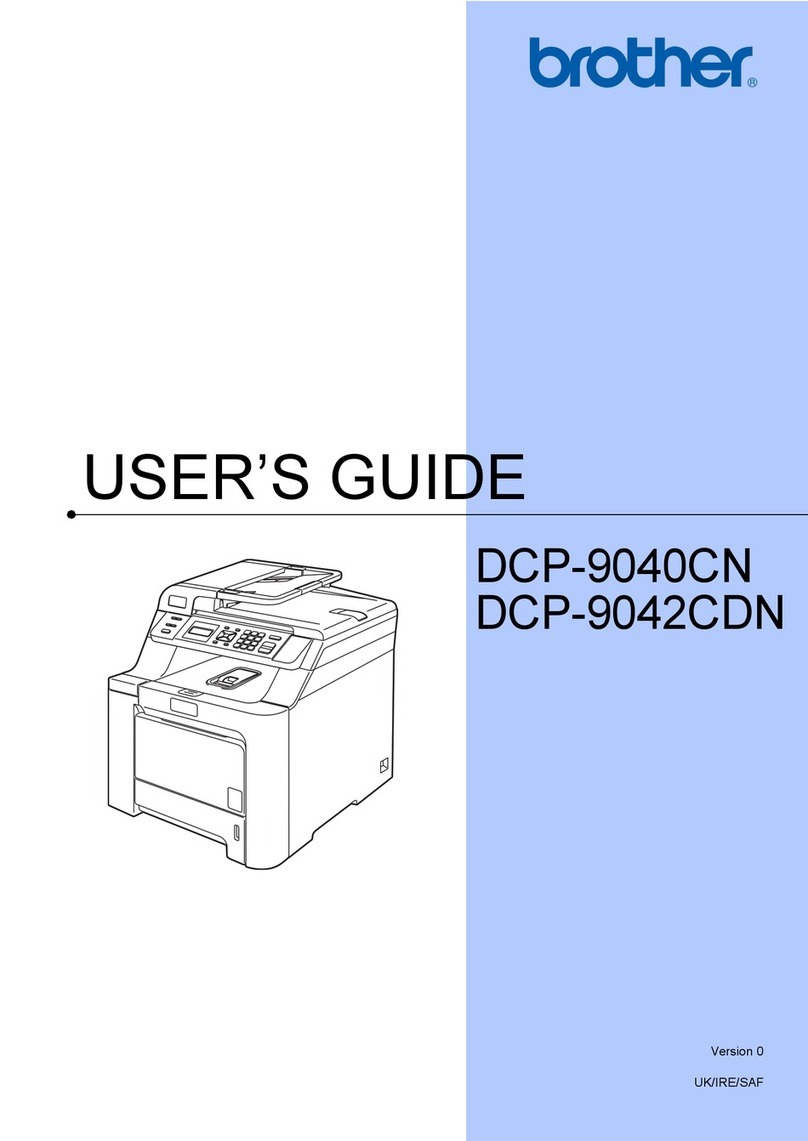
Brother
Brother DCP-9042CDN user guide
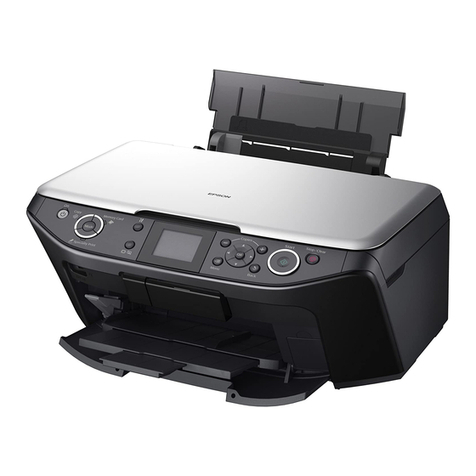
Epson
Epson STYLUS PHOTO RX585 Series Service manual

FutureLogic
FutureLogic GEN2 Cleaning guide
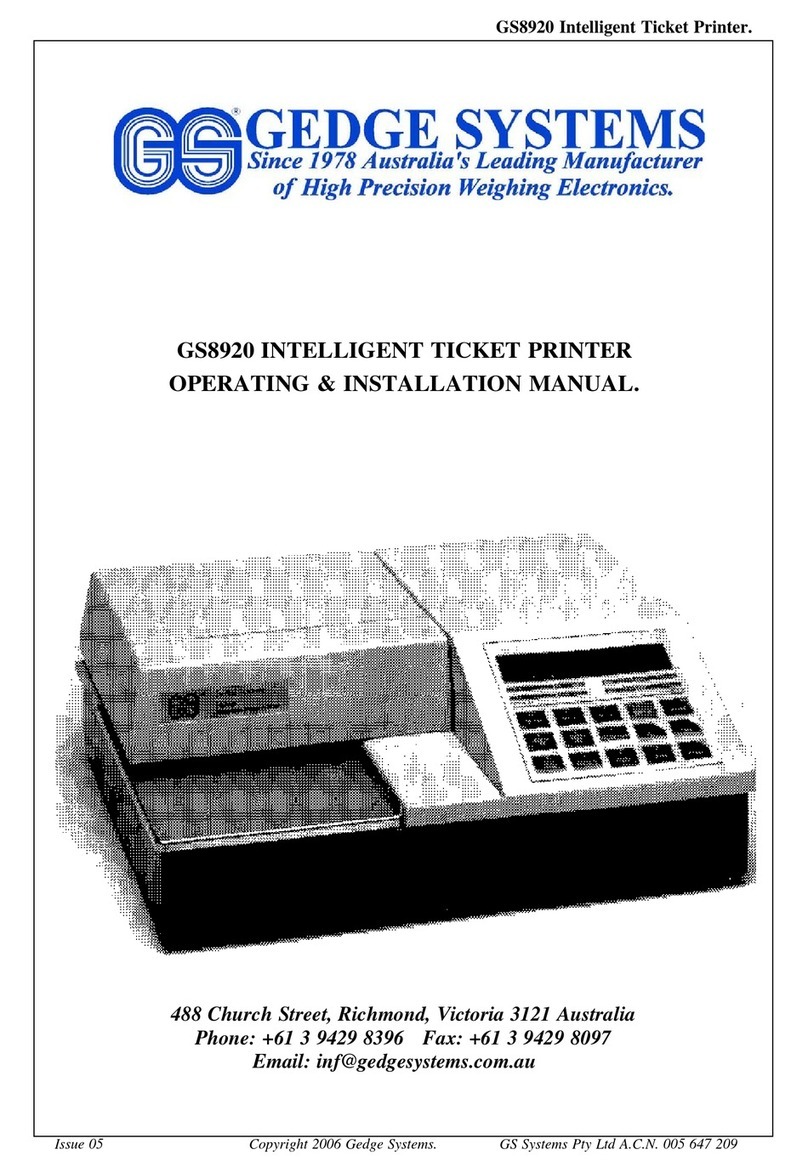
Gedge Systems
Gedge Systems GS8920 Operating & installation manual

Canon
Canon iP1700 - PIXMA Color Inkjet Printer quick start guide
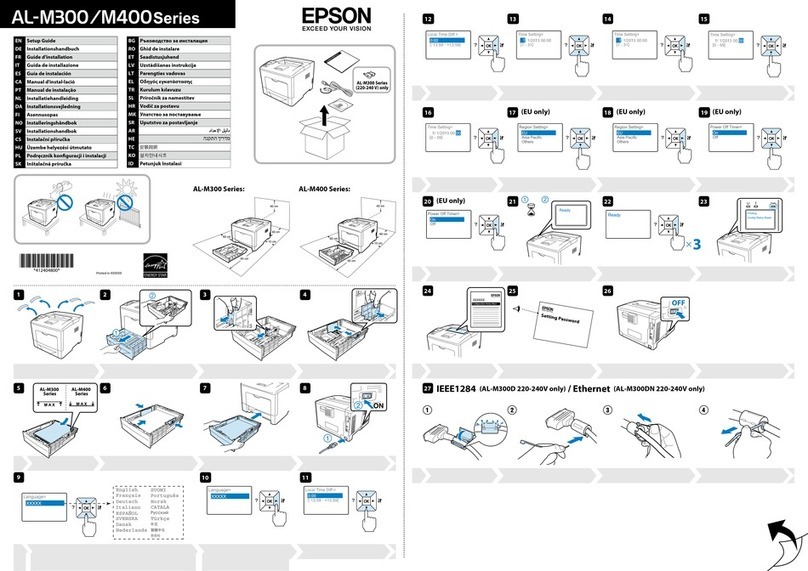
Epson
Epson WorkForce AL-M400DN Setup guide
